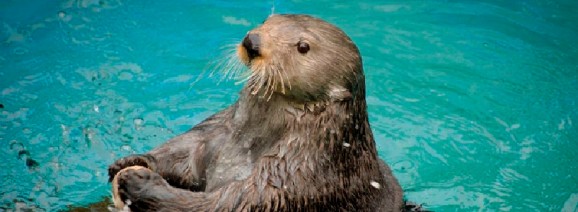
Why You Can’t Flush Used Cat Litter Down the Toilet in California
One of the benefits of Beth Anne’s Finest All Natural Cat Litter is that it can be disposed of in a variety of ways without harming the environment. Our cat litter can be sprinkled outdoors or placed into a landfill where it will breakdown naturally. And, if you choose to dispose of used cat litter by immersing it in water, it will transform to the consistency of pancake batter so it can be flushed away without harming pipes or clogging septic tanks.
California is the only state which prohibits the flushing of used cat litter due to the fragile marine wildlife along the coast of California. Probably the most famous of the coastal habitat is the Southern Sea Otter (Enhydra lutris nereis). They once ranged from Baja California to the Pacific Northwest but by the 1920’s they were almost extinct due to over hunting. Sea otters were listed as threatened under the Endangered Species Act in 1977. While great efforts are being made to recover their population, the southern sea otters rate of increase has been limited by the availability of food. And there remains the threat of a major oil spill.
 In 1911, when sea otters gained protection under the North Pacific Fur Seal Treaty, a very small group of approximately 50 otters survived along the remote Big Sur Coast. Since then, they’ve slowly expanded in number to nearly 3000. Their range extends from south of Half Moon Bay in the north to south of Point Conception in the south, only a fraction of their historic range.
In 1911, when sea otters gained protection under the North Pacific Fur Seal Treaty, a very small group of approximately 50 otters survived along the remote Big Sur Coast. Since then, they’ve slowly expanded in number to nearly 3000. Their range extends from south of Half Moon Bay in the north to south of Point Conception in the south, only a fraction of their historic range.
The harm which can be caused by used cat litter is the possible presence of a parasite named toxoplasmosis in cat fecal matter. There is evidence that toxoplasmosis has infected marine mammals and sea otters. Toxoplasmosis cannot be destroyed by sewage treatment. It discharges into waterways, where crabs and starfish feed on it, thus endangering the lives of other marine mammals who feed on the crabs and starfish. Toxoplasmosis can cause brain damage and death in sea otters.
The Monterey Bay Aquarium Sea Otter Program has been on the forefront of research on southern sea otters since 1984. Their mission is to understand threats to the population and promoting its recovery. They also rescue, treat and release injured otters; raise and release stranded pups through the surrogate program; and seek homes for sea otters that can’t be returned to the wild.
To learn more about the Sea Otter Program, visit the Monterey Bay Aquarium website. You can watch them on the Monterey Bay Aquarium sea otter cam.
You can view sea otters in the wild on the Elkhorn Slough’s Otter Cam at the Elkhorn Slough National Estuarine Research Reserve: The Elkhorn Slough is located about halfway between the coastal towns of Santa Cruz and Monterey.
To learn more about California Southern Sea Otters, you can watch PBS Nature: Saving Otter 501.
Comments are closed.



